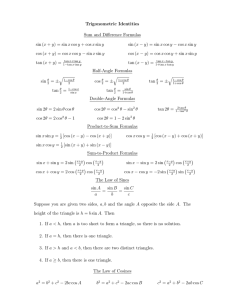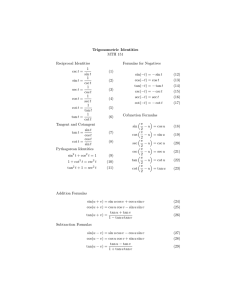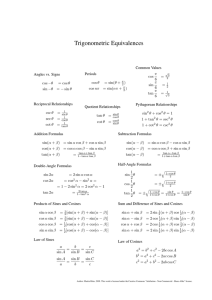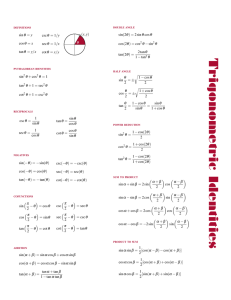Sections 3.7-3.8
Anuncio
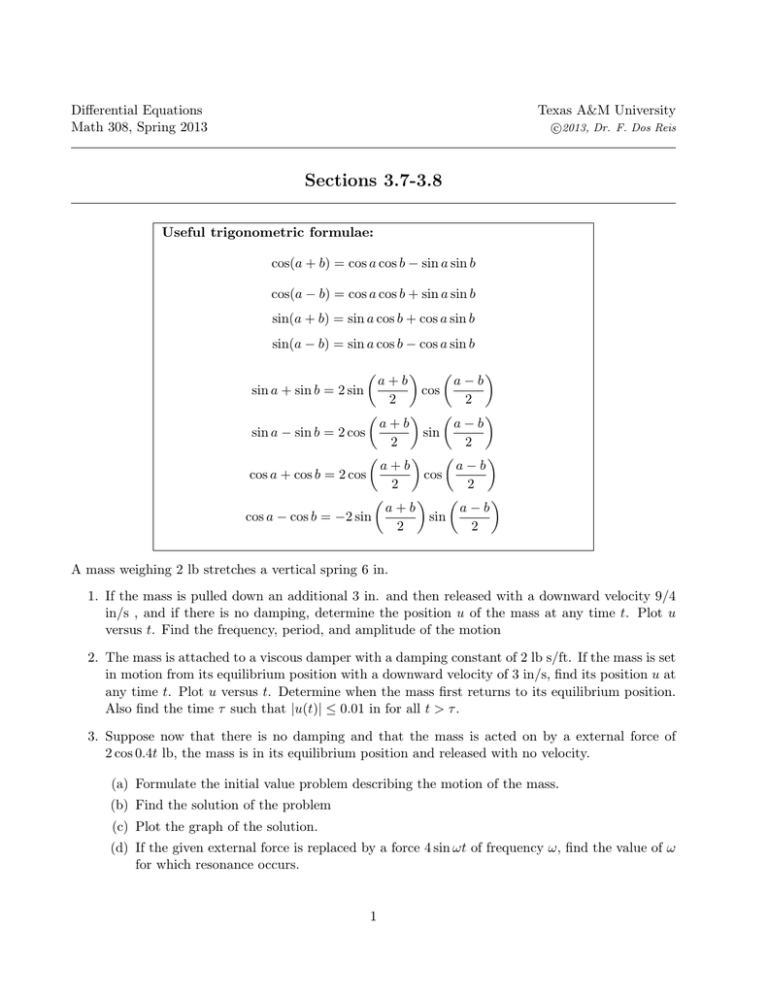
Differential Equations Math 308, Spring 2013 Texas A&M University c 2013, Dr. F. Dos Reis Sections 3.7-3.8 Useful trigonometric formulae: cos(a + b) = cos a cos b − sin a sin b cos(a − b) = cos a cos b + sin a sin b sin(a + b) = sin a cos b + cos a sin b sin(a − b) = sin a cos b − cos a sin b a−b a+b cos sin a + sin b = 2 sin 2 2 a+b a−b sin a − sin b = 2 cos sin 2 2 a−b a+b cos cos a + cos b = 2 cos 2 2 a+b a−b cos a − cos b = −2 sin sin 2 2 A mass weighing 2 lb stretches a vertical spring 6 in. 1. If the mass is pulled down an additional 3 in. and then released with a downward velocity 9/4 in/s , and if there is no damping, determine the position u of the mass at any time t. Plot u versus t. Find the frequency, period, and amplitude of the motion 2. The mass is attached to a viscous damper with a damping constant of 2 lb s/ft. If the mass is set in motion from its equilibrium position with a downward velocity of 3 in/s, find its position u at any time t. Plot u versus t. Determine when the mass first returns to its equilibrium position. Also find the time τ such that |u(t)| ≤ 0.01 in for all t > τ . 3. Suppose now that there is no damping and that the mass is acted on by a external force of 2 cos 0.4t lb, the mass is in its equilibrium position and released with no velocity. (a) Formulate the initial value problem describing the motion of the mass. (b) Find the solution of the problem (c) Plot the graph of the solution. (d) If the given external force is replaced by a force 4 sin ωt of frequency ω, find the value of ω for which resonance occurs. 1
